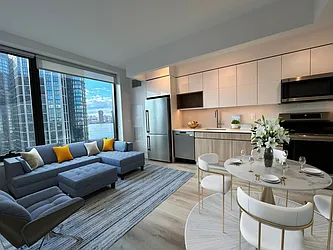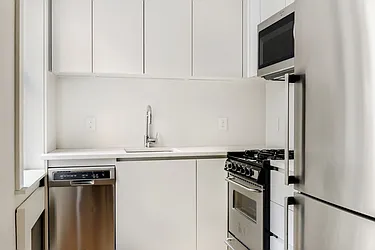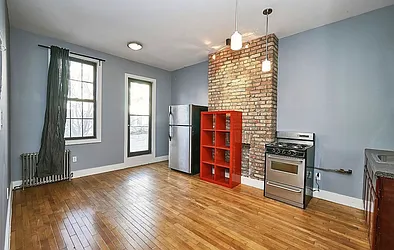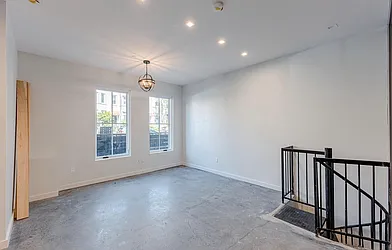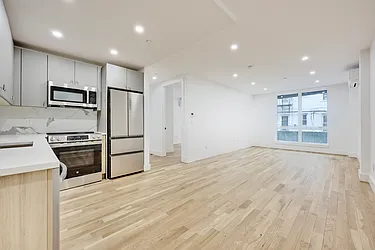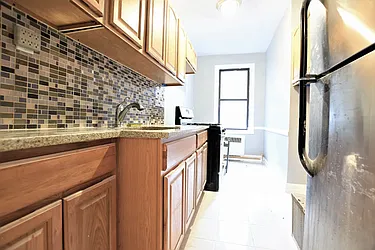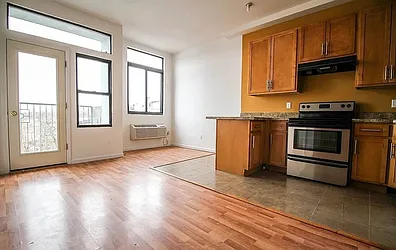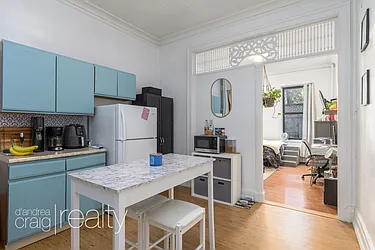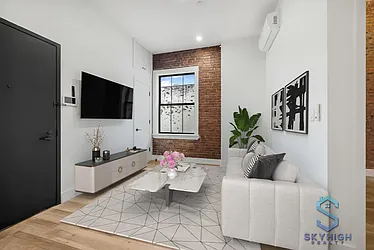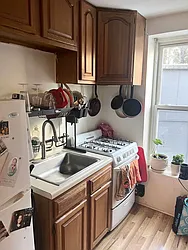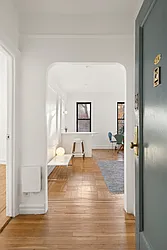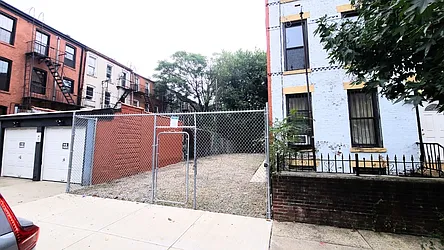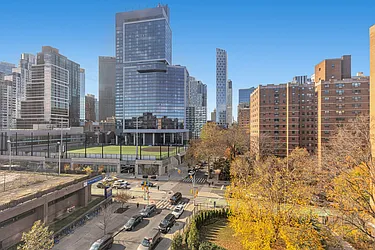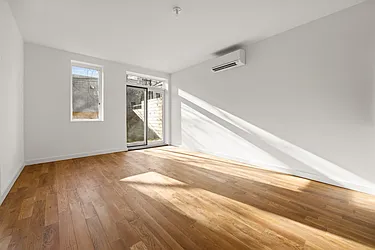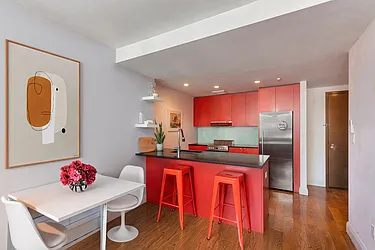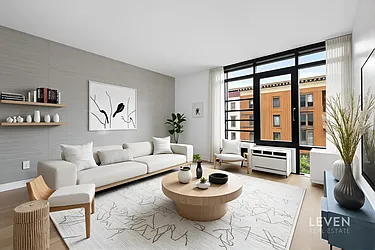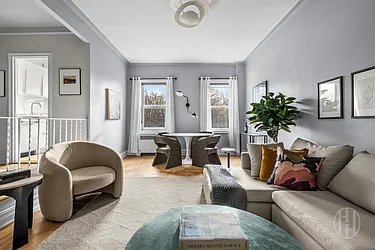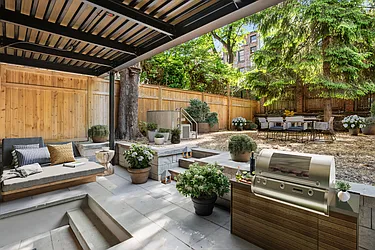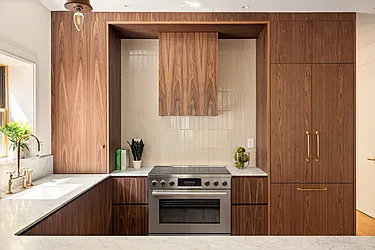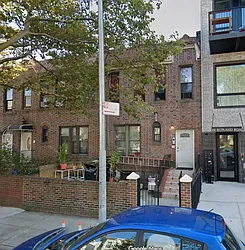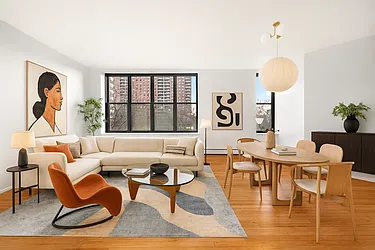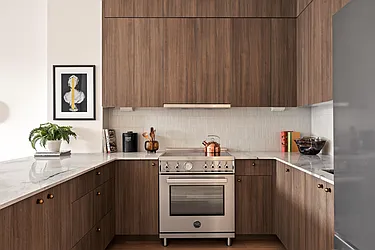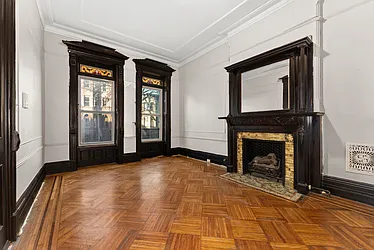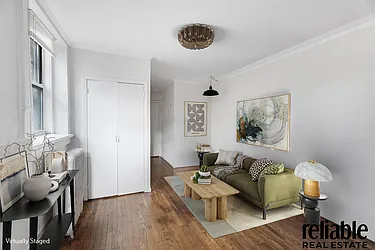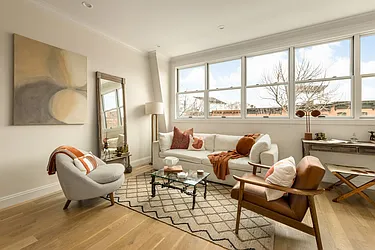Moving in NYC
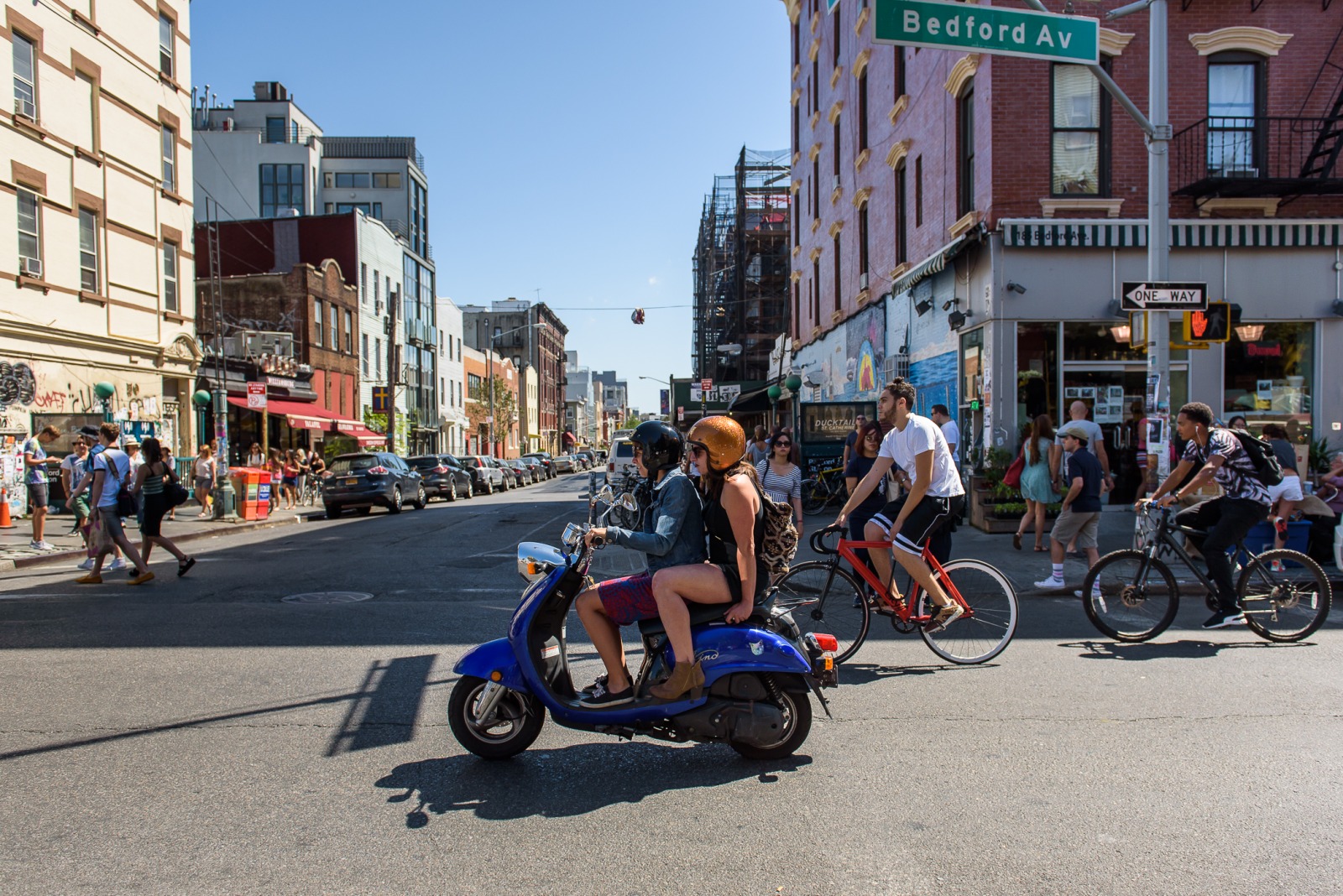
What are the best neighborhoods for eating out? How reliable is the G train? Why are there so many brownstones? This guide answers all your burning questions about moving from Manhattan to Brooklyn.
Manhattanites move more than any other New Yorkers, with 15% of the borough’s population relocating to a new home each year. If you are among that group, Brooklyn is probably on your radar. And with good reason! Brooklyn is a great place to live, home to wonderful parks, a growing number of tech jobs, and a dynamic population of newcomers and natives alike. While moving from Manhattan to Brooklyn might seem like no more than a change in area code, there are some important things to know about its real estate market, transportation options, and lifestyle. Here are answers to 19 of your most burning questions.
1. Is Brooklyn Cheaper Than Manhattan?
This question gets asked frequently, and the answer is: It depends. The median asking rent and median recorded sales price are lower in Brooklyn than they are in Manhattan, in general. But borough-wide comparisons are not really fair, because Brooklyn is huge and prices vary greatly from one neighborhood to the next. For example, the median asking rent in Dumbo is $4,500 per month, but it’s only $1,999 in Midwood. Cobble Hill is among the most expensive neighborhoods in the entire city, with its recorded sale price tripling in the last decade. But over in East Flatbush, the median recorded sales price is a relatively affordable $599,000. To explore how home value varies from neighborhood to neighborhood, check out StreetEasy’s Data Dashboard.
Brooklyn Rentals Under $3,500 on StreetEasy Article continues below
2. What County Is Brooklyn in?
Don’t worry: When you move from Manhattan to Brooklyn, you’re not moving to a new city! Brooklyn is part of New York City, but it is its own borough and its own county: Kings County. (A quick refresher: There are five boroughs that make up New York City, and each borough is its own county. Only two of the boroughs’ names align with their county names, though, which is why it can be so hard to remember what county Manhattan is in.)
3. Is Brooklyn Safe?
Crime has declined substantially in Brooklyn since the 1970s, as it has all across the city. That said, crime rates vary from neighborhood to neighborhood, and even block to block. If you are curious about which areas in Brooklyn are the safest, you can explore the NYC Crime Map, which illustrates crime statistics by police precinct. Based on the July 2018–July 2019 records, the top three safest areas in the borough are all in south Brooklyn. They include Borough Park/Mapleton, Bensonhurst/Gravesend/Bath Beach, and Bay Ridge.
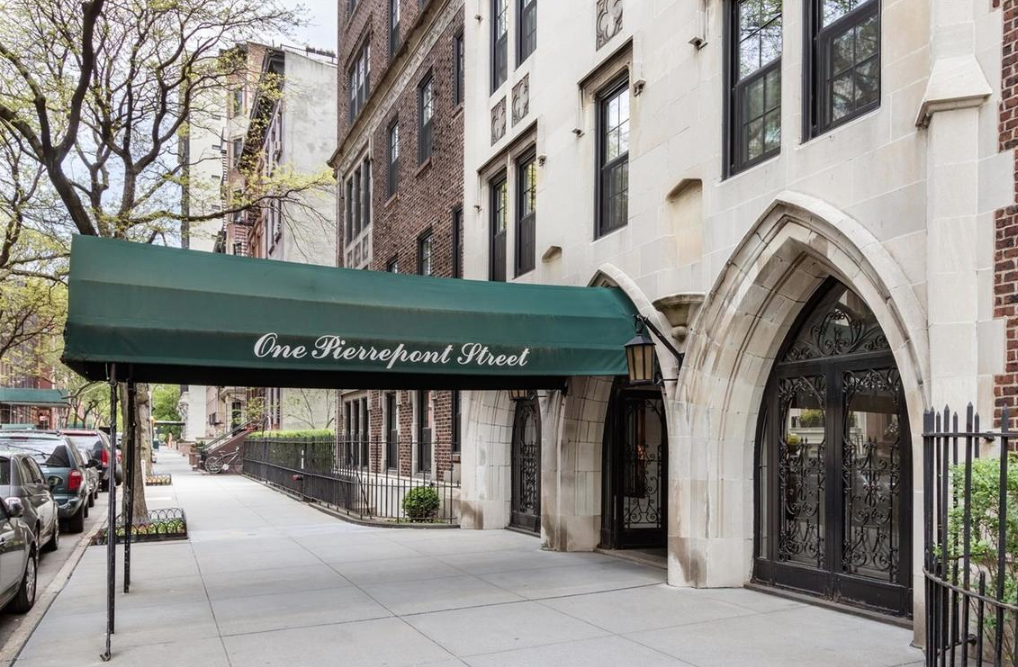
One Pierrepont Street is a 26-unit co-op building in Brooklyn Heights. It’s one of 44 doorman buildings in the neighborhood.
4. Are There Doorman Buildings in Brooklyn?
Yes. But Brooklyn has far fewer doorman buildings than Manhattan: A recent search on StreetEasy identified 487 doorman buildings in Brooklyn vs. 3,123 in Manhattan. If you’re moving from Manhattan to Brooklyn and want a doorman, the neighborhoods of Brooklyn Heights and Williamsburg will be your best bets.
5. How Do Public Schools Work in Brooklyn?
In Brooklyn, like in the rest of the city, your exact address determines your school zone. You can use the Department of Education website to find out what yours is. But don’t assume that your kid has to go to your zoned school: There are also 93 charter schools in Brooklyn, which offer an alternative to the zoned admission process. In addition, there are many speciality schools throughout the borough, as well as other ways to broaden your options for getting your kid into your public school of choice.
6. If I Move to Brooklyn, Do I Need to Get an NYC ID?
No, you don’t need an NYC ID — or IDNYC, as it’s officially known — to move to Brooklyn (or to move anywhere in NYC). But this form of identification can be very useful, and it’s free. You’ll still need a passport or REAL ID to get on an airline flight, but you can use IDNYC to open a bank account at some local banks if you do not have a passport or driver’s license, and IDNYC can also get you a slew of discounts at local museums, movie theaters, and gyms.
Brooklyn Sales Under $950K on StreetEasy Article continues below
7. How Do Utilities Work in Brooklyn?
Con Edison provides electricity to homes in all five boroughs, it but only provides natural gas (for heat and cooking) in Manhattan, the Bronx, and northern Queens. In Brooklyn, National Grid will be your natural gas provider. If you are moving from Manhattan to Brooklyn, contact National Grid to set up service in your new apartment ASAP. This is especially important if you have a gas stove, rather than an electric one.
8. How Easy Is Street Parking?
Parking anywhere in New York City is often difficult, but in certain parts of Brooklyn, it can be even more challenging. That’s because many local neighborhoods impose alternate-side-of-the-street parking four times a week, instead of the customary two. If you own a car and plan to park it on the street, check out the parking rules in your new neighborhood before making the move to Brooklyn.
9. Where Can I Get Groceries in Brooklyn?
Many of the major food-delivery services operate in Brooklyn, which is a convenient option if you are short on time or there are no supermarkets in your neighborhood. If you have a car, there are several popular grocery stores with large, free parking lots. These include the new Wegmans in the Brooklyn Navy Yard, the Whole Foods in Gowanus, Fairway in Red Hook, and several Key Food and Western Beef locations throughout the borough.
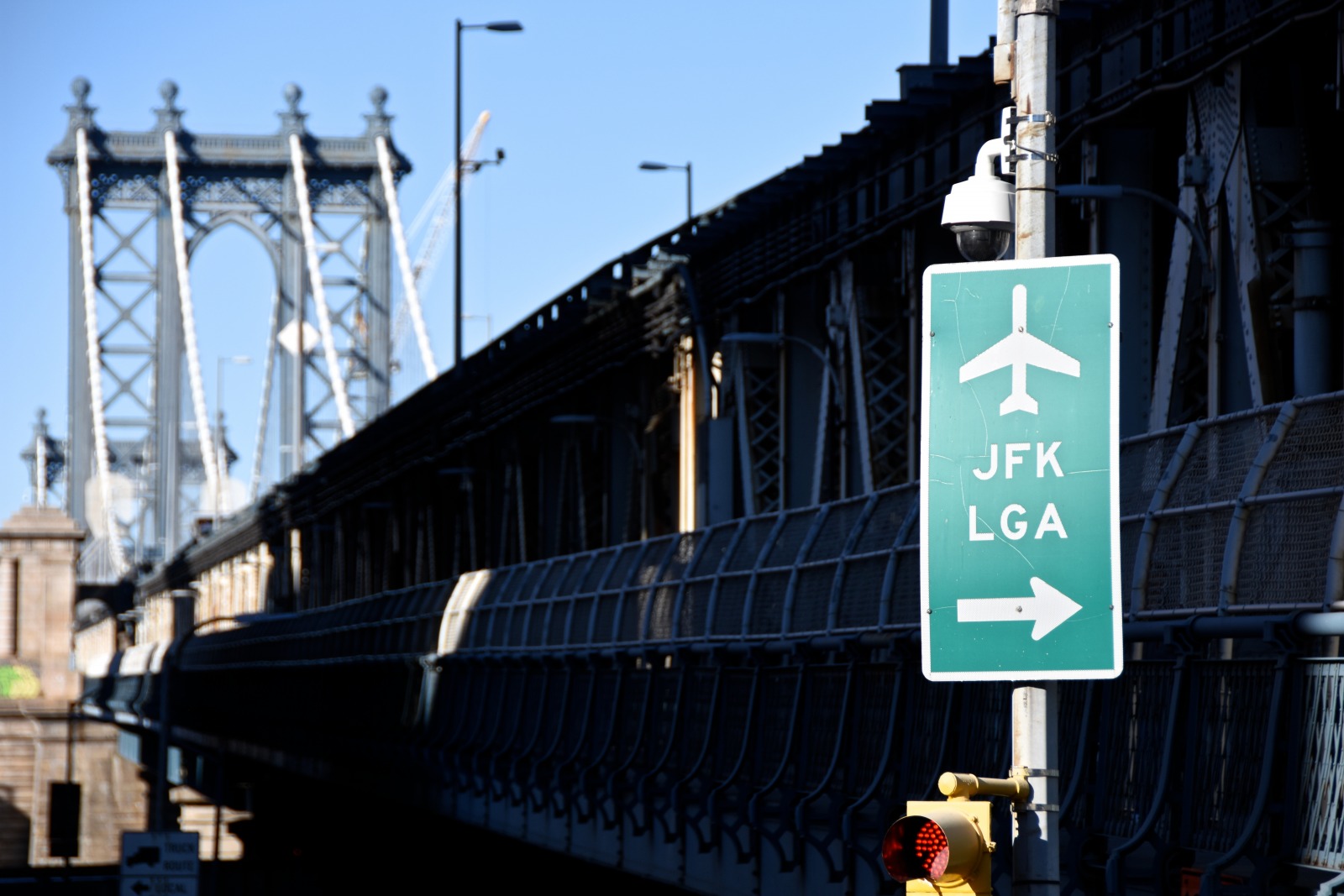
LaGuardia and JFK are the most convenient airports from Brooklyn. (Katrin Sauerwein/Getty Images)
10. What’s the Closest Airport to Brooklyn?
John F. Kennedy International and LaGuardia are the closest airports. That said, Brooklynites often opt for JFK, since it can be reached by public transportation. Travelers can take either the A train or the LIRR from Atlantic Terminal and transfer to the AirTrain at Jamaica station. Catching a cab or ride-share to JFK can also be a good option, especially in the pre-dawn hours when traffic is light. Fares range between $42 and $64.
LaGuardia, while relatively close, is not accessible via public transportation from anywhere in the borough. Taking a cab or ride-share is a good option from north Brooklyn, but it can be quite expensive and slow from south and central Brooklyn neighborhoods. And recent construction has made catching a taxi or ride-share at LaGuardia very difficult.
11. Is the G Train Reliable?
The G train, which only makes stops in Brooklyn and Queens, gets a bad rap for being slow, short, and unreliable. But don’t be so quick to dismiss this small but important train line. In recent years, the MTA has made efforts to improve service, including adding better signage to indicate where on the platform the train will stop. In 2019, the average ride on the G train actually got 20 seconds faster.
12. What’s Going on With the L Train?
Brooklyn avoided a complete L train shutdown, but ongoing construction work has impacted service to Williamsburg on nights and weekends. Trains run normally during peak weekday times, but on nights and weekends, they run only every 20 minutes.
13. What’s the Best Way to Get to Prospect Park?
Manhattan’s de facto backyard is Central Park. In Brooklyn, it’s Prospect Park. It’s is one of the borough’s most popular parks, attracting tons of picnickers, bikers, and ballplayers, especially on summer weekends. The best way to get there is via public transportation, since parking can be a hassle. Subway options include the F and G at the 15th Street and 9th Street Stations, the Q at Parkside Avenue and Prospect Park Stations, and 2 and 3 trains at Grand Army Plaza. There is a free parking lot outside the Litchfield Villa at Prospect Park West and 5th Street, but it is small and fills up fast. Keep in mind that the park is closed to car traffic at all times.

Dog Beach in Prospect Park is almost as fun for people as it is for dogs. (Daniel Barry/Getty Images)
14. Is Brooklyn Dog-Friendly?
You bet it is! Three of New York City’s 10 most dog-friendly neighborhoods are located in Brooklyn — Dumbo, ranked second on this list, boasts a whopping seven dog parks. There are many dog-friendly parks and destinations throughout the borough: In Prospect Park, for example, dogs can play off leash in the Long Meadow and at Dog Beach between 5 and 9 a.m. every day. The Gate in Park Slope, Pig Beach in Gowanus, and Lucky Dog in Williamsburg are some of the many dog-friendly bars in Brooklyn.
15. Why Are There So Many Brownstones in Brooklyn?
Brooklyn has many brownstone-dense neighborhoods, including Fort Greene, Park Slope, and Bedford-Stuyvesant. The popularity of brownstones in Brooklyn dates back to the 19th century, when it became the building material of choice among aspiring homeowners, supplanting brick and limestone. Because the material was easy to source from nearby quarries in Connecticut, and relatively easy to cut thanks to the rise of steam-powered machinery, masons could crank out rows of brownstones faster and more cost-effectively than ever before.
Brownstone Brooklyn Homes Under $2.5M on StreetEasy Article continues below
16. Why Is Composting So Popular in Brooklyn?
Recycling organic scraps is fairly common all over the city, but it’s especially popular in Brooklyn thanks to a pilot program launched in Windsor Terrace in 2013. The composting program soon spread to other Brooklyn neighborhoods and now services 3.5 million residents across the five boroughs. In addition to curbside organic waste pickup, there are many compost drop-off locations throughout Brooklyn.
17. Where Are the Celebrity Hotspots in Brooklyn?
We’ve counted more than 20 major celebs who have bought, sold, or rented in Brooklyn in the past couple of years: Daniel Craig, Maggie Gyllenhaal, and Michelle Williams, to name a few! Recently, Brooklyn Heights has become a particularly popular choice. Matt Damon, John Krasinksi, and Emily Blunt all have bought apartments at the Standish, a new boutique condominium in the neighborhood.
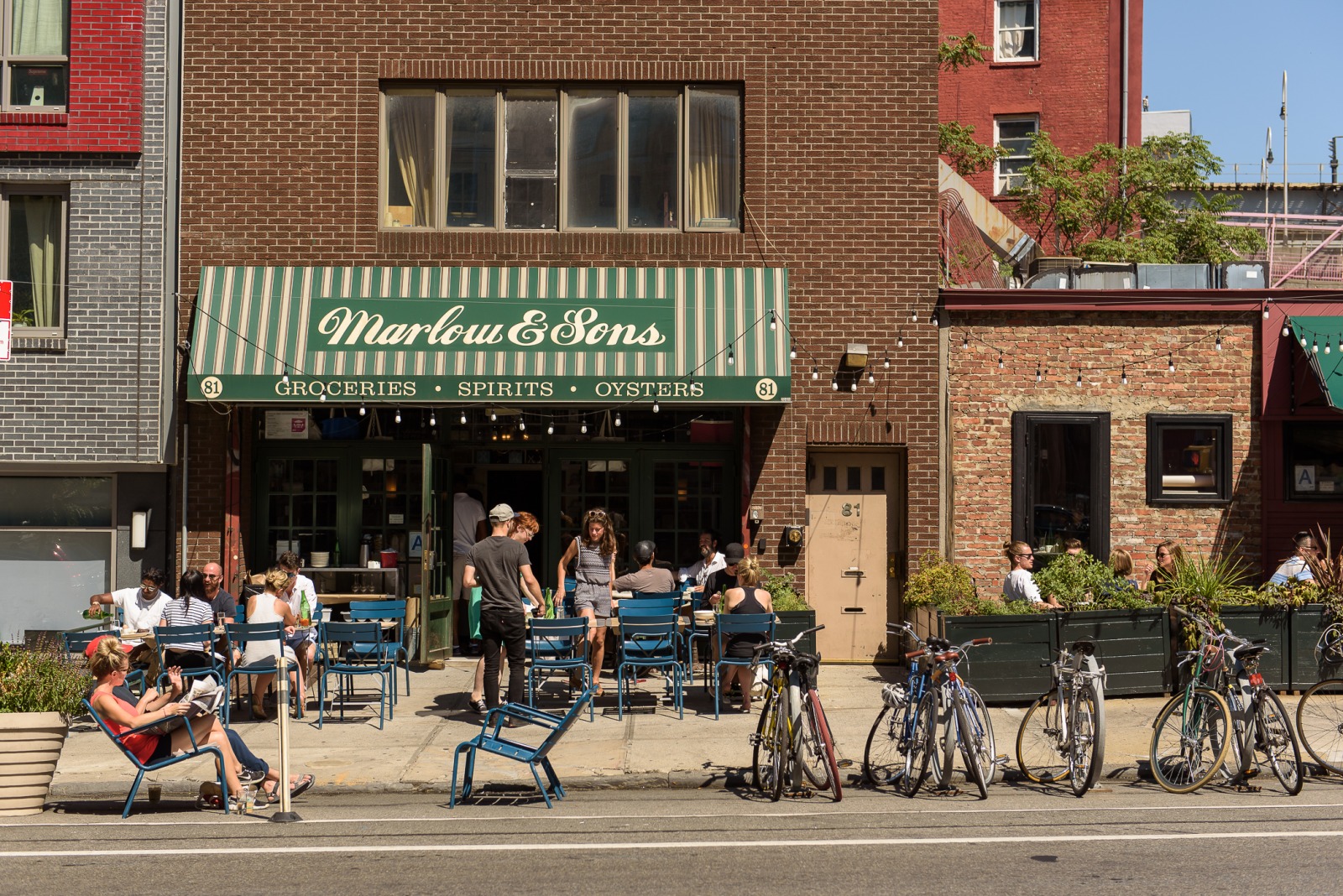
Marlow & Sons opened on Broadway in Williamsburg in 2004 and was one of the neighborhood’s first destination restaurants.
18. What Are the Best Brooklyn Neighborhoods for Eating Out?
Moving from Manhattan to Brooklyn will not require you to give up access to top-notch restaurants! Yes, the majority of New York City’s Michelin-star restaurants are in Manhattan, but Brooklyn has 10 of its own — four are located in Williamsburg alone. Other noteworthy neighborhoods for eating out in Brooklyn include Dumbo, Prospect Heights, Clinton Hill, and Gowanus, but of course, there are great restaurants across the entire borough. Local publications like Edible Brooklyn can help you discover what’s cooking in your neighborhood.
19. What Are the Best Tourist Destinations in Brooklyn?
You don’t necessarily have to go to Manhattan to show tourists NYC’s best sights. There are tons of tourist attractions in Brooklyn, too: Some of them are iconic, like the Brooklyn Bridge, but many are lesser known. Other local landmarks include Green-Wood Cemetery, which was designed by the same landscape architects as Central Park; the Brooklyn Botanic Garden, known for its insanely popular annual cherry blossom festival; and the Weeksville Heritage Center, honoring one of the country’s first free black communities. Williamsburg is chock full of great shopping, eating, and people watching and contains tons of trendy restaurants, in addition to classic old-school joints like Peter Luger Steak House. If you opt for the latter, be sure to bring cash (and your appetite).
—
Inspired to find your next place in New York? Whether you’re looking to rent or to buy, search NYC apartments on StreetEasy.
